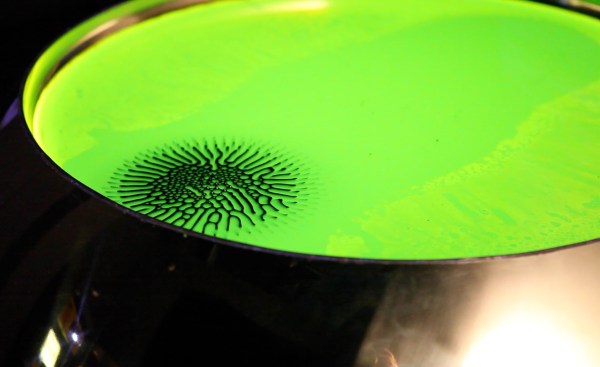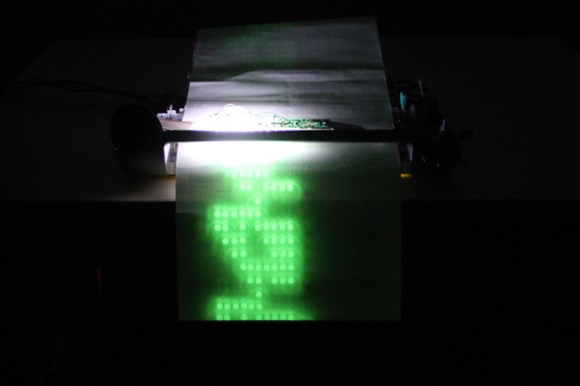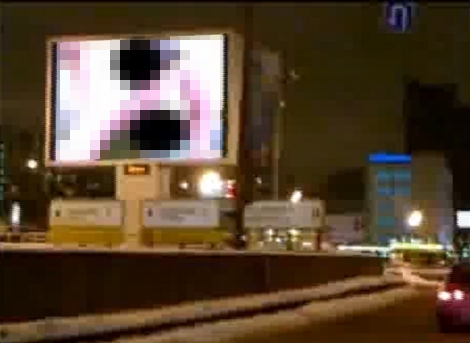Moscow artist [Dmitry Morozov] makes phenomenal geek-art. (That’s not disrespect — rather the highest praise.) And with Solaris, he’s done it again.
The piece itself looks like something out of a sci-fi or horror movie. Organic black forms coalesce and fade away underneath a glowing pool of green fluid. (Is it antifreeze?) On deeper inspection, the blob is moving in correspondence with a spectator’s brain activity. Cool.
You should definitely check out the videos. We love to watch ferrofluid just on its own — watching it bubble up out of a pool of contrasting toxic-green ooze is icing on the cake. Our only wish is that the camera spent more time on the piece itself.
Two minutes into the first video we get a little peek behind the curtain, and of course it’s done with an Arduino, a couple of motors, and a large permanent magnet. Move the motor around with input from an Epoc brain-activity sensor and you’re done. As with all good art, though, the result is significantly greater than the sum of its parts.
[Dmitry’s] work has been covered many, many times already on Hackaday, but he keeps turning out the gems. We could watch this one for hours.













